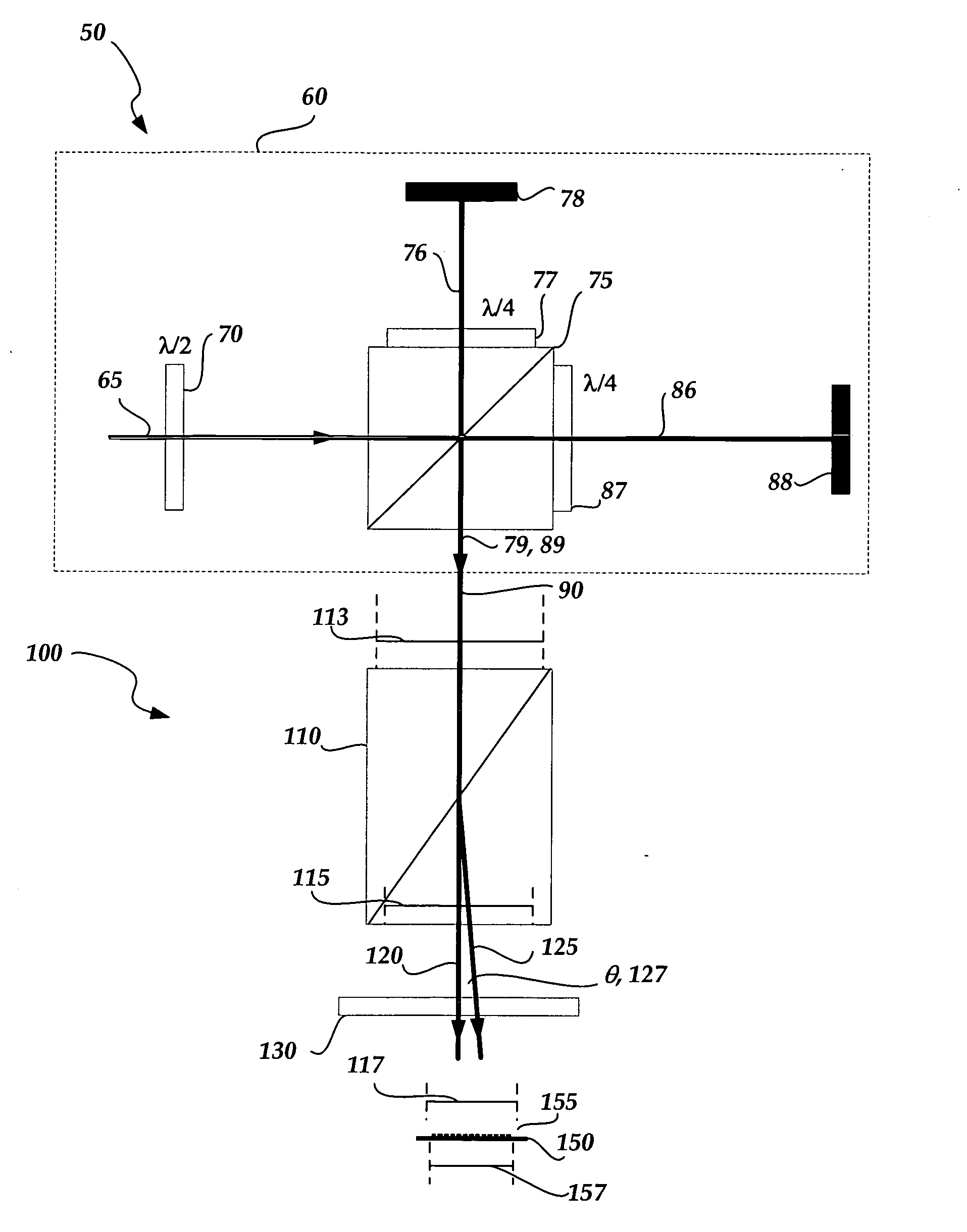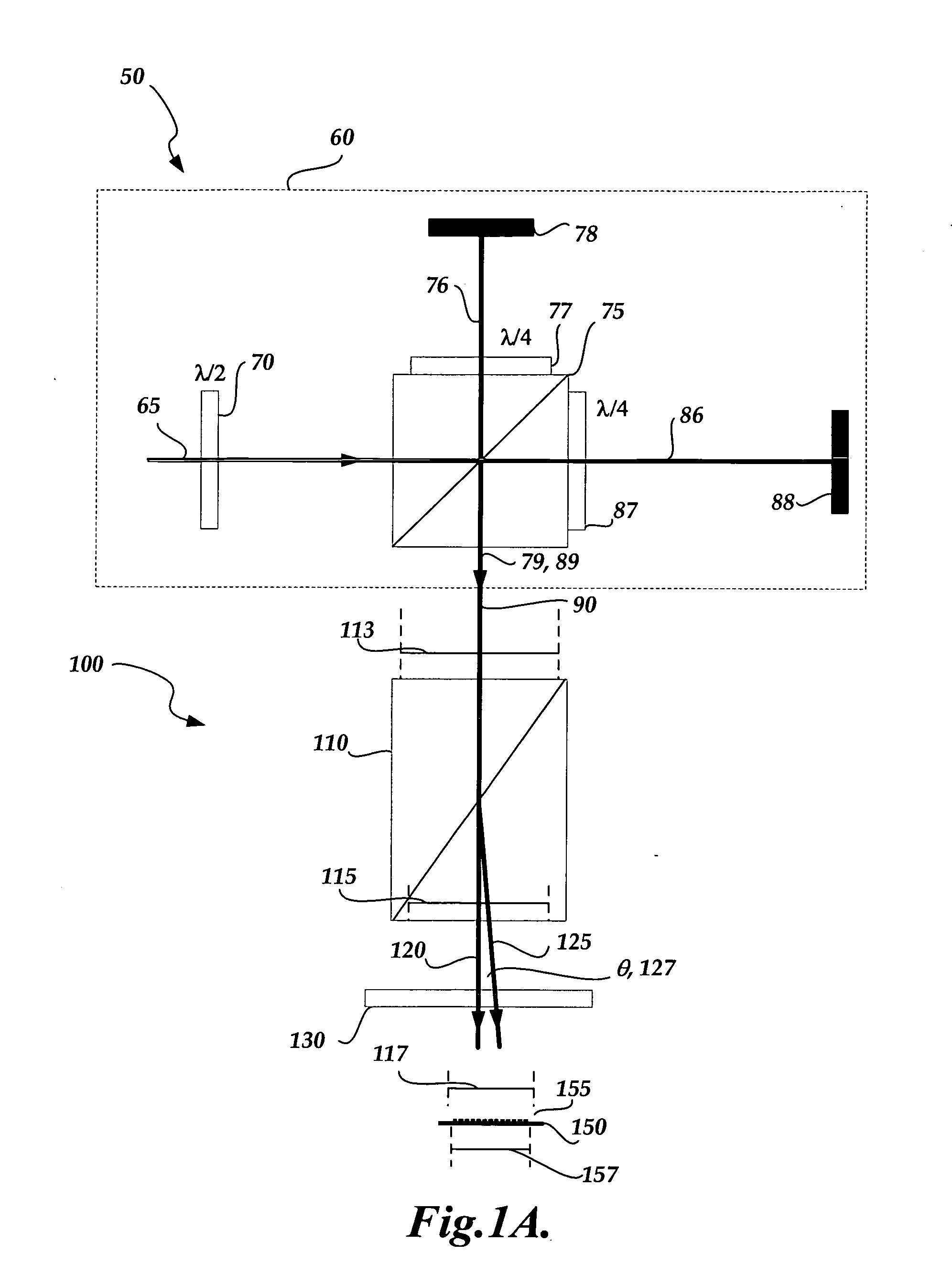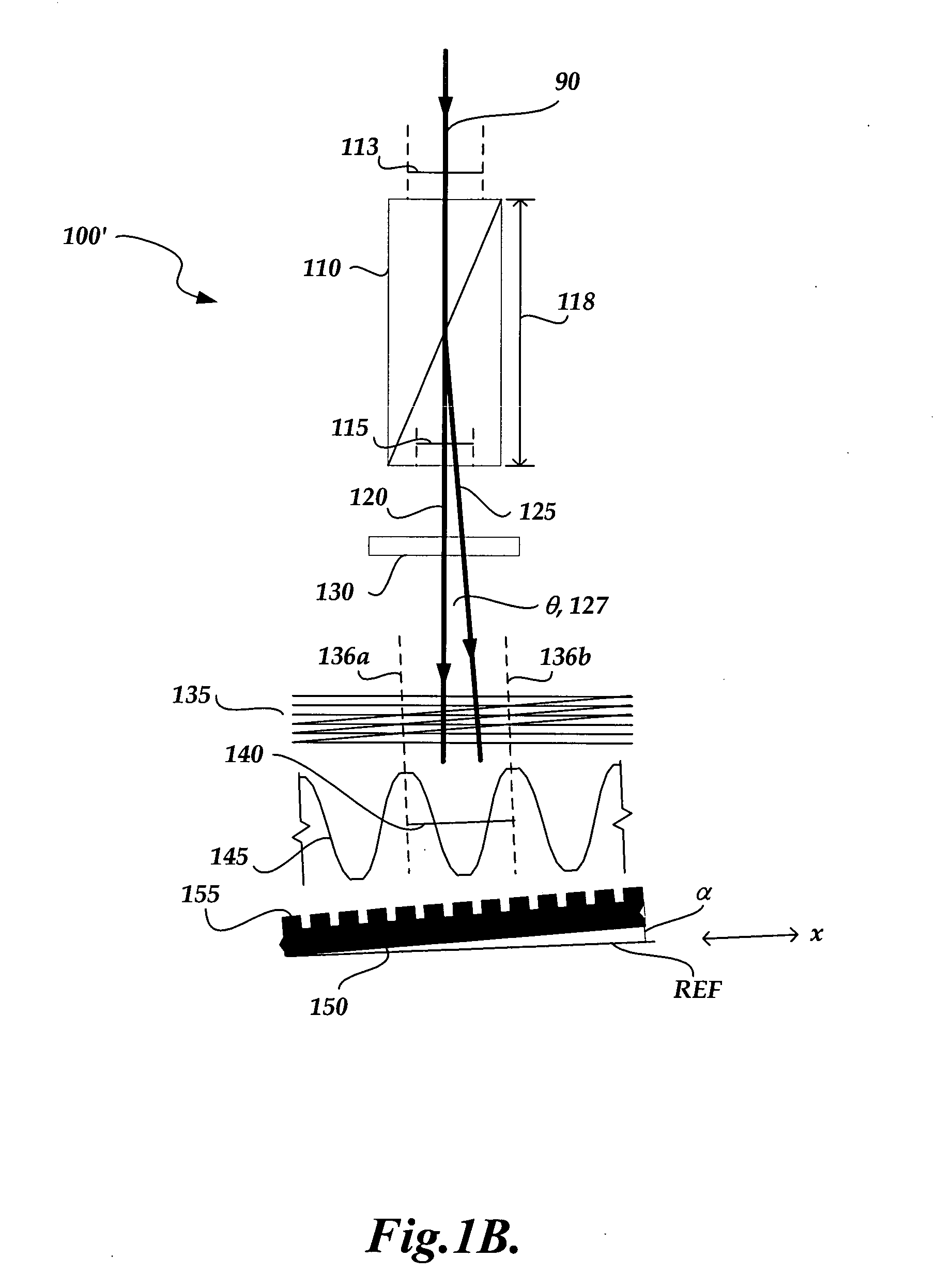Detector for interferometric distance measurement
a technology of detection device and interferometer, which is applied in the direction of measurement device, interferometer, instruments, etc., can solve the problems of limited and achieve the goal of improving reliability, extending accuracy and/or reliability, and resolution and/or accuracy of polarization interferometer
- Summary
- Abstract
- Description
- Claims
- Application Information
AI Technical Summary
Benefits of technology
Problems solved by technology
Method used
Image
Examples
Embodiment Construction
[0027] It should be understood that in various figures, illustrated component dimensions and spacings are selected for illustration clarity. Different parts of a figure may be drawn to different drawing scales, depending on various details to be emphasized. Such discrepancies should be apparent to one skilled in the art. Desirable and practical device configurations will be understood based upon the entirety of this disclosure.
[0028]FIG. 1A shows an exemplary interferometric distance measuring apparatus 50, including an interferometer portion 60 and a detector 100. In the interferometer portion 60, a laser source (not shown) may be used to generate coherent radiation 65. The radiation 65 passes through a half-wave plate 70 and is then incident on a polarizing beam splitter 75, which transmits the portion of the radiation 65 that is “P” polarized to form reference beam 86, and reflects the portion of the radiation which is “S” polarized to form object beam 76. The reference beam 86 ...
PUM
 Login to View More
Login to View More Abstract
Description
Claims
Application Information
 Login to View More
Login to View More - R&D
- Intellectual Property
- Life Sciences
- Materials
- Tech Scout
- Unparalleled Data Quality
- Higher Quality Content
- 60% Fewer Hallucinations
Browse by: Latest US Patents, China's latest patents, Technical Efficacy Thesaurus, Application Domain, Technology Topic, Popular Technical Reports.
© 2025 PatSnap. All rights reserved.Legal|Privacy policy|Modern Slavery Act Transparency Statement|Sitemap|About US| Contact US: help@patsnap.com



